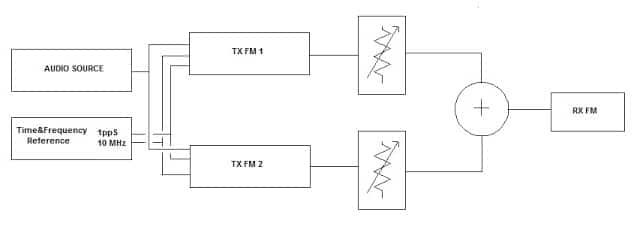ISOFREQUENCY IN FM – The point of the situation
This subject excites the curiosity and interest of FM Broadcasting technicians and managers starting about forty years ago.
In my life, I have received more than a thousand times this simple question: “Does it work or does it not work?”
A minimally serious answer could require entire volumes and would bore or confuse everybody.
The only possibility for a simple and easy understandable answer is making a practical audio-video example, on the basis of what has been done to show the quality difference between an analog FM broadcasting in Mono and Stereo :
http://air-radiorama.blogspot.it/2017/10/analog-fm-stereo-vs-mono-myths-and-truth.html
Since there are a myriad of parameters that can affect the results of the reception of two FM transmitter sites under conditions of: “Isofrequency YES – Isofrequency NO”, I chose to publish the qualitative comparison in this humble report : the most simple limit case (obviously there were a myriad of others with variable parameters) that was simulated in a laboratory session from the customer (Radio Maria)with equipment produced by Elenos :
A) Monophonic emission
B) Stationary reception
C) Same signal amplitude of the two transmitters at the receiver (Protection ratio = 0dB)
D) High signal at the receiver input (-50dBm)
E) Absence of interference from other signals
C) Contemporary arrival of the signals from the two transmitters to the receiver (Same time of arrival -TOA)
D) Equal index of modulation of the transmitters (Isomodulation)
E) Frequency difference between the transmitters: 0.1 Hz (360 ° every 10 seconds)
The test: “Isofrequency YES / Isofrequency NO” was performed by disconnecting one of the two transmitters at the 22nd second of the video (a few seconds before the end).
For those who want to learn more about the topic, the official reference document is:
https://www.itu.int/dms_pubrec/itu-r/rec/bs/R-REC-BS.412-9-199812-I!!PDF-E.pdf
In particular pages 17-23 .
The video confirms the ITU thesis exposed at page 21 :
It may be noted that in the most favorable case (monophonic mode, 2 µs time delay) the protection ratio is very close to 0 dB using synchronized transmitters
and that the equipment used in the tests achieve this result.
Below is the measurement setup adopted:







